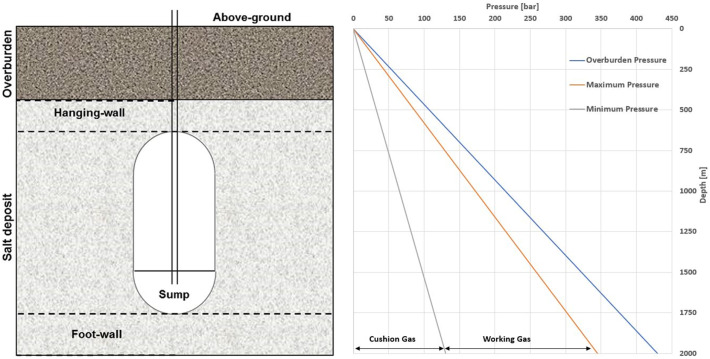
Natural Hydrogen: A Low-Carbon Energy Gem Beneath Our Feet?
In a significant review featured in Nature Reviews Earth & Environment, researchers have presented strong evidence that natural hydrogen gas — created deep within the Earth’s crust through ancient geological activities — might be among the largest unexploited energy resources on the planet. If economically harnessed, this concealed gas could yield an energy reserve equivalent to 170,000 years of current global oil usage, offering a potentially revolutionary, low-carbon power source to aid the worldwide shift from fossil fuels.
Formed without emissions and widely spread across the globe, natural hydrogen could be the surprising contender in the journey toward a more sustainable energy future.
Origins of Natural Hydrogen
Unlike hydrogen generated industrially through methane reforming or renewable-driven electrolysis — processes that emit considerable greenhouse gases or necessitate substantial energy inputs — natural hydrogen emerges spontaneously and abundantly through geological reactions that have endured for billions of years.
As highlighted in the University of Oxford-led review, two primary processes account for hydrogen generation in the continental crust:
1. Water–Rock Interaction (Serpentinization): When water penetrates the Earth’s crust and reacts with iron-rich ultramafic rocks such as peridotite, a redox reaction occurs. Ferrous iron (Fe2+) in the rocks oxidizes to ferric iron (Fe3+), resulting in the release of hydrogen gas.
2. Radiolysis: Naturally existing radioactive elements like uranium, thorium, and potassium emit radiation as they decay. This radiation disassociates water molecules into hydrogen and oxygen — a process that continues at a gradual but consistent rate over geological epochs.
These processes are amplified in fractured rocks, where water can infiltrate deeper and react more comprehensively. The hydrogen produced can accumulate in specific types of crustal settings, potentially forming reservoirs that can be extracted.
Potential Locations: Four Key Geological Environments
The new study identifies four primary geological contexts where hydrogen is likely to be found in commercially viable amounts:
– Continental Margin Ophiolite Complexes: Elevated ancient ocean floor crusts abundant in iron-rich rocks that effectively produce hydrogen through serpentinization.
– Alkaline Granite Terranes: Regions featuring radiogenic granites rich in uranium and thorium, optimal for hydrogen-generating radiolysis.
– Large Igneous Provinces (LIPs): Extensive areas of mafic, iron-rich rock capable of supporting significant water–rock interactions.
– Archaean Greenstone Belts and TTG Batholiths: Some of Earth’s oldest geological structures, integrating both radiolytic and serpentinization processes for hydrogen production.
Notably, these rock formations exist on every continent, suggesting that natural hydrogen could serve as a widely available and geopolitically dispersed energy resource compared to fossil fuels or rare earth elements.
Empirical Evidence: Hydrogen in Mali
While theoretical models have long anticipated underground hydrogen, the 2018 discovery of the Bourakebougou field in Mali energized the energy sector. The site generates hydrogen gas exceeding 97% purity — and significantly, it flows naturally from the Earth similar to conventional gas wells. Although the total amount of hydrogen in Bourakebougou remains uncertain, the find has confirmed that natural hydrogen can gather in extractable deposits.
To achieve commercial viability, however, a hydrogen system necessitates certain conditions: a source rock with hydrogen-producing capacity, pathways for the gas to migrate, an impermeable seal to retain the gas, and safeguards against losses from geochemical reactions or microbial consumption. The scarcity of such ideal scenarios may restrict the practical accessibility of natural hydrogen.
Not Quite Renewable — But Sustainable
One important point emphasized by the study is that natural hydrogen is not a “renewable” resource in the conventional sense. Although it burns cleanly and produces no carbon emissions when utilized, its formation occurs over timescales of thousands to millions of years. This is in contrast to solar or wind energy, which are effectively renewed in real time.
Nonetheless, natural hydrogen may fit into a new intermediate category: a finite yet extensive clean energy resource with a considerably lower environmental footprint than hydrocarbons. Additionally, it may prove to be more economical to extract. According to estimates within the review, natural hydrogen could potentially be extracted at a cost ranging from $0.50 to $1.00 per kilogram — well below the current prices for green hydrogen ($2.50–$6.50/kg) or blue hydrogen ($1.50–$4.00/kg).
Knowledge Gaps and Exploration Challenges
Despite its potential, significant obstacles persist. Scientists remain uncertain about the exact amount of recoverable hydrogen in the crust. Much of it may have dissipated or been consumed by subsurface microorganisms over time. Moreover, large high-purity deposits like the one in Mali could be rare anomalies.
To enhance discovery opportunities, the study advocates for increased investment in:
– Mapping and quantifying source rocks and hydrogen generation rates.